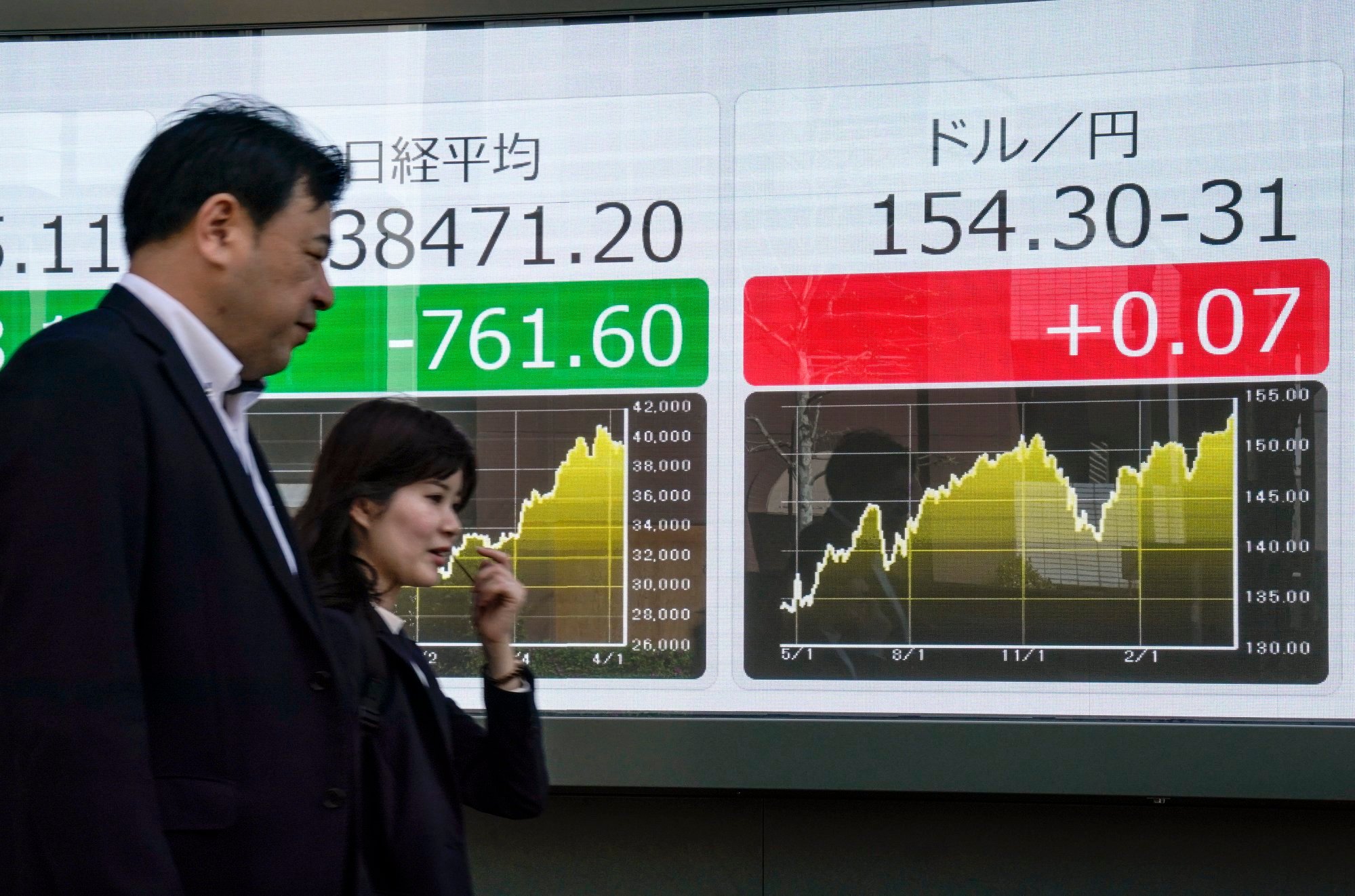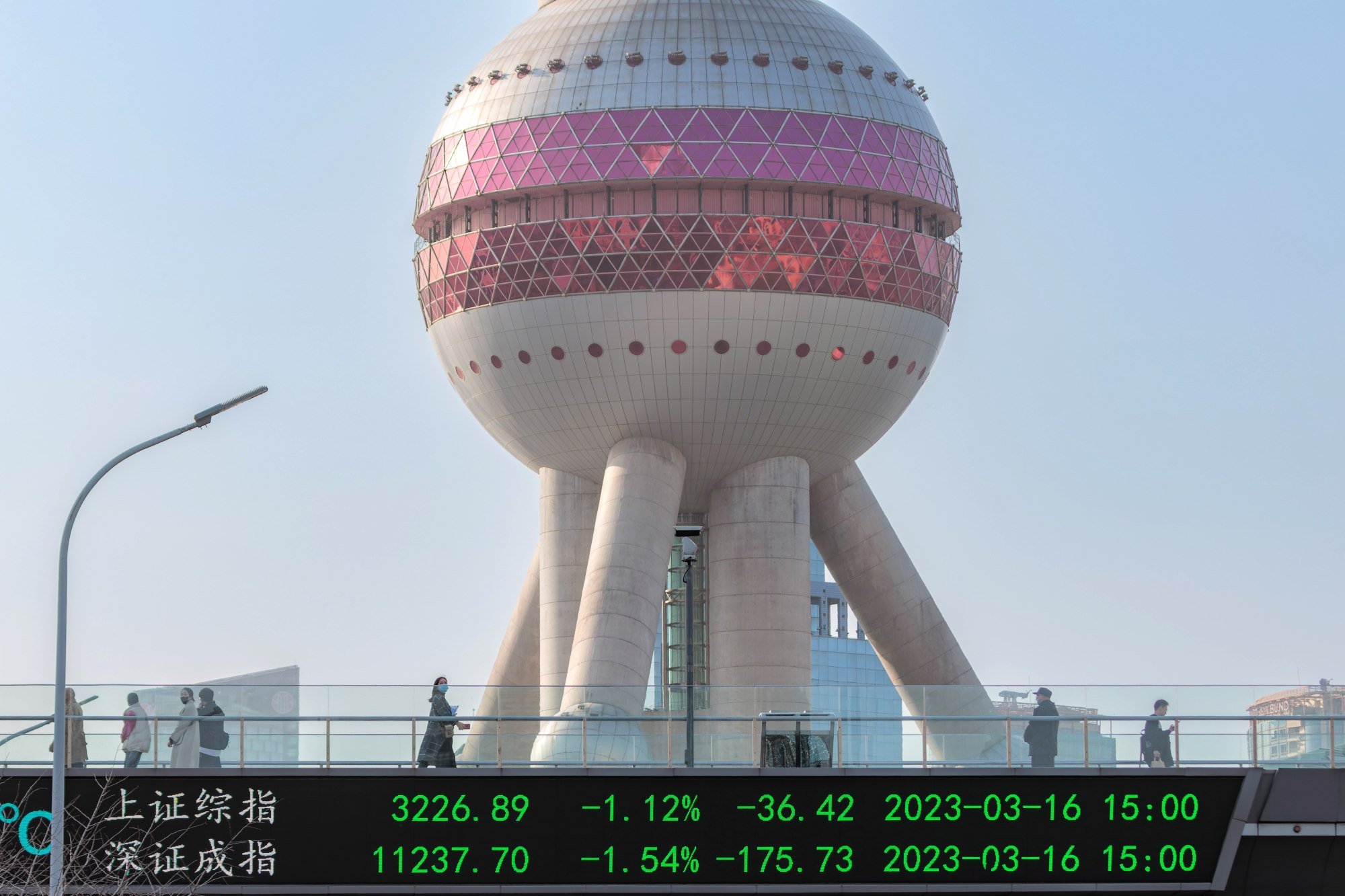
AI, yen are among hotspots to watch in Asia this earnings season
- The MSCI Asia Pacific Index is expected to see its first year-on-year profit growth in eight quarters, with earnings per share rising 4.1 per cent for the March quarter
- Corporate profit growth appears to be accelerating, creating a favourable view of the outlook for Asian equity markets, Dalma Capital’s Gary Dugan says
Asia looks ready to turn a corner in quarterly earnings growth this results season, and traders are focusing on key themes to make the most of the opportunity.
The biggest topics include the sharp growth in megacap technology profits, the continued boom in artificial intelligence and improving Chinese payouts. Investors are also watching how earnings in Japan get impacted by the yen’s sharp depreciation while searching for new winners in India’s pricey market.
The MSCI Asia Pacific Index is expected to see its first year-on-year profit growth in eight quarters, with earnings per share rising 4.1 per cent for the period ended March, according to data compiled by Bloomberg. Technology stocks are expected to lead the growth, while utilities are poised to see a turnaround.
“Corporate profit growth appears to be accelerating, creating a favourable view of the outlook for Asian equity markets if based purely on the region’s fundamentals,” said Gary Dugan, chief investment officer at Dalma Capital Management. “However, the challenge of high US rates and a strong dollar could delay the rally.”
Here’s a look at five key themes to watch as earnings reports roll in over the next few weeks.

AI boom
Money continues to pour into all things semiconductors on the continued bright outlook for AI applications. That’s providing a windfall for Asia’s tech-dominated markets even as signs of a recovery in broader consumer electronics are keenly awaited.
Taiwan’s Taiex has jumped 16 per cent over the past three months, the best performance among major national equity benchmarks. South Korean stocks notched a record quarterly foreign net inflow of US$12.2 billion in the first three months of this year.
Samsung Electronics provided hope for the coming results season with a preliminary report showing a sharp rebound in profit on higher memory prices and robust smartphones sales. Taiwan Semiconductor Manufacturing Co, the world’s largest chip foundry, is scheduled to announce earnings on April 18.
“It seems increasingly likely that consensus estimates on both the top and bottom lines will be proven overly conservative again,” said Han Piow Liew, the head of equity derivatives at Maitri Asset Management. “They will probably be well beaten, to bring forth another fresh round of upwards earnings revision and consequently support the strong upwards momentum of the AI theme.”

Yen impact
Japanese companies may have to navigate foreign exchange volatility as global central banks face crucial policy turning points, with the Bank of Japan (BoJ) moving to gradually tighten while the Federal Reserve eventually eases policy. The yen has weakened to a 34-year low, putting traders on alert for intervention by Japanese authorities to defend the currency.
The weak yen has helped Japan’s exporters rake in record profits and drive the Nikkei 225 to an all-time high. While major firms including carmaker Toyota Motor and PlayStation maker Sony Group employ overseas manufacturing and hedging strategies to mitigate forex risk, other companies face larger impacts.
“Our base case is for the BoJ to remain dovish,” SMBC Nikko Securities strategists led by Hikaru Yasuda said in a note last month. “From mid-2024, we think real wage growth and heightened expectations for Fed rate cuts could prompt a shift in focus to domestic demand sectors.”

China returns
Dividends and buy-backs are rising in importance for investors in China stocks after serial earnings disappointments and years of declining share prices.
Chinese companies have been working on enhancing shareholder returns, with some of the country’s largest names increasing payouts after regulator calls to improve governance and prioritise the interest of smaller investors. While most visible among state-run giants, many of the companies paying out more than 50 per cent are high-growth private firms.
A gauge of companies with histories of high dividends has rallied more than 15 per cent this year, on track for its fourth-straight year of outperformance versus the benchmark Shanghai Composite Index.

Megacap earnings
The MSCI Asia Pacific Communication Services Index – which features the region’s major internet, telecommunications and videogame names – is expected to show a 136 per cent jump in earnings for the January-March quarter compared with the year-ago period. That is the biggest increase since the fourth quarter of 2020, according to data compiled by Bloomberg.
That may bode well for the gauge, which stands little changed from where it was at the end of 2022. It would be positive for the broader Asian equity markets as well, as the megacap tech stocks are among the region’s biggest drivers.
China e-commerce giant Tencent Holdings is expected to post earnings growth of 37 per cent, rebounding from two quarters of declines. Japan’s Softbank Group is expected to remain profitbale after swinging to a profit in the last quarter of 2023. Both are due to report in May.

India rotation
With the eight-year rally in Indian stocks showing some signs of fatigue, investors are looking for new drivers. A gauge of potential candidates to join the NSE Nifty 50 Index has seen its forward profit estimates climb 20 per cent so far this year, far outpacing the 4% increase for the larger gauge.
In addition to earnings, another key catalyst may be national elections that begin on Friday, with Prime Minister Narendra Modi expected to secure another term as leader of the world’s fastest growing major economy. Stocks in the Nifty Next 50 include industrial and materials firms directly benefiting from that growth.

